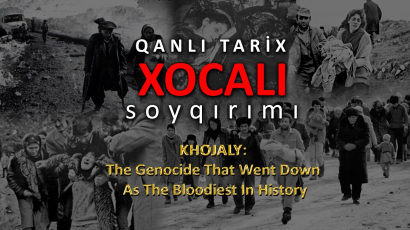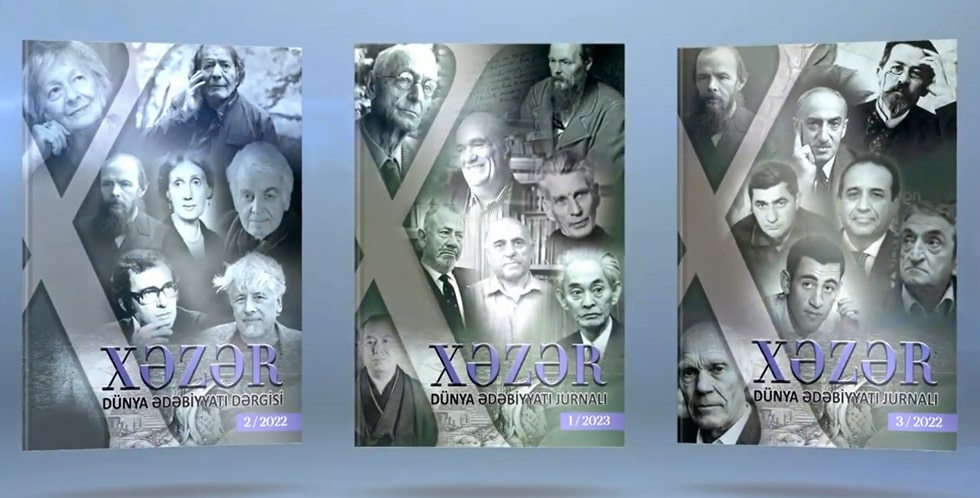Khojaly: The Genocide That Went Down As The Bloodiest In History

"The Khojaly genocide with its inconceivable cruelty and inhuman punitive methods, was completely targeted against the people of Azerbaijan and represents a barbarian act in the history of humankind. At the same time, this genocide was a historical crime against humanity."
Heydar Aliyev
“The Khojaly tragedy was a bloody page of the genocide and ethnic cleansing policy pursued along hundreds years by militant Armenian nationalists against the Turkic and Azerbaijan peoples.”
Ilham Aliyev
President of the Republic of Azerbaijan
The Khojaly genocide, one of the gravest crimes against humanity, will be forever etched in our minds as the bloodiest in history. In addition to killings of a significant number of peaceful Azerbaijanis, there is talk of horrors of torturing innocent people beyond what we can imagine, in particular of a Human Tragedy which is incomparable, for cruelty, with the horrific massacres at Katyn, Lidice, and Oradour.
On the night of February 25-26, 1992, the picturesquely situated city of Khojaly, southwestern Azerbaijan, was shelled from the military hardware of the 366th Motorized Rifle Regiment... The city, blocked from three sides, was invaded following the assault. Although the survivors of Khojaly - children, women and old people - went into the forests along the snow-covered passages, some of them, frozen and exhausted by the cold, were killed with special cruelty by Armenian armed formations on Askeran-Nakhchivanli plain.
https://mod.gov.az/az/xocali-soyqirimi-411/
Local and foreign journalists, who arrived by helicopter on February 28 and March 1, witnessed the horrifying scene. The scalps of corpses had been removed, their ears, limbs, internal organs, and their eyes had been cut out. The dead bodies had had numerous knife and bullet wounds, heavy military equipment had passed through civilians and burned them alive; 4 captive Meskhetian Turks and 3 Azerbaijanis had been beheaded at Armenians graves, and 2 more Azerbaijanis had been blinded.
The investigation identified that the Armenians had torn the bellies of captured pregnant women with a soldier's knife and fed dogs with foetus (babies), they filled the women’s bellies with shells, live cats, snakes, frogs, mice and stitching their wounds, watched their painful death.
https://az.wikipedia.org/wiki/Xocalı_soyqırımı
In due time, foreign journalists who had arrived at the scene of great human tragedy have written much about the atrocities in Khojaly committed by Armenians.
Journal La Croix-l’Evénement (Paris), March 25, 1992: "The Armenians attacked Khojaly. The whole world witnessed disfigured dead bodies."
The Sunday Times (London), March 1, 1992: "The Armenian soldiers have annihilated thousand families."
"…Armenians shot down the column of refugees that fled to Aghdam...” (Financial Times (London), March 9, 1992);
The Times, London, 4 March 1992: “Two groups, apparently families, had fallen together, the children cradled in the women’s arms. Several of them, including one small girl, had terrible head injuries: only her face was left.”
Izvestiya (Moscow), March 4, 1992: “The camera has demonstrated corpses of children with the cut off ears. The half of the face of a woman has been cut off. Men`s corpses were scalped”.
Le Monde (Paris), March 14, 1992: “The foreign journalists, who were in Aghdam, saw among corpses of the women and children killed in Khojaly, corpses of three persons who were scalped and whose nails were pulled out. It is not propagation of Azerbaijanis, but the truth.”
Izvestiya (Moscow), March 13, 1992: “Major Leonid Kravets: I personally saw on a hill about hundred corpses. The corpse of a boy did not have a head. Everywhere were seen corpses of women, children and the old men, killed with special cruelty.”
R. Patrick, journalist of English TV Company Fant Men News (he was on the scene): “In the eyes of world community, it is impossible to justify the evil deeds in Khojaly.”
https://azerbaijan.az/related-information/113
From all investigation material on the occupation of Khojaly and atrocities committed against civilians in the city: “The main perpetrators of vandalism in Khojaly are the Armenian armed forces and the personnel of the 366th Motorized Rifle Regiment. Actions of Armenians and their accomplices that participated in Khojaly tragedy are rough violation of human rights, cynical neglect of international legal acts - Geneva convention, Universal declaration of human rights, International pact on civil and political rights, International pact on economic, social and cultural rights, Declaration on child rights, Declaration on protection of women and children in emergency and during armed conflicts and other facts of international law. The attack was launched by the 2nd battalion of the 366th regiment under the command of Major Ohanyan Seyran Mushegovich (later the Minister of Defense of Armenia), the 3rd battalion under the command of Yevgeny Nabokikh, Army Chief of Staff of the 1st battalion Shitchyan Valery Isaevich and more than 50 Armenian officers and warrant officers.
In Khojaly genocide, 613 innocent people - 63 children, 106 women and 70 elderly – were killed; 8 families completely slaughtered; 25 children lost both, while 130 children one of their parents; 1275 people taken hostage, with 150 of them still missing; while 487 people were left disabled. One city, one settlement, eight villages, 2495 houses, 31 industrial and 15 agricultural facilities, 20 educational and 14 health institutions, 56 cultural and 5 communication facilities, etc. were destroyed and looted by the Armenians.”
Every single figure that stands for a human destiny shows the results of the bloodiest tragedy committed by Armenians illegally demanding the joining of Nagorno-Karabakh Autonomous Oblast of Azerbaijan to Armenia.
https://ombudsman.az/az/view/pages/163/
AND OTHER...
-
 Book “Fuzuli’s Creativity” by Mir Jalal Out in Jordan
Book “Fuzuli’s Creativity” by Mir Jalal Out in Jordan
The book “Fuzuli’s Creativity” by the famous Azerbaijani writer and literary scholar Mir Jalal, which tells about the works of the brilliant Azerbaijani poet...
-
 Yusif Vazir Chamanzaminli’s Creativity in the Israeli Literary Magazine
Yusif Vazir Chamanzaminli’s Creativity in the Israeli Literary Magazine
“Artikl”, the popular Israeli literary magazine, has posted in Russian an excerpt from the novel “In the Crossfire” by Yusif Vazir Chamanzaminli, the outstanding...









